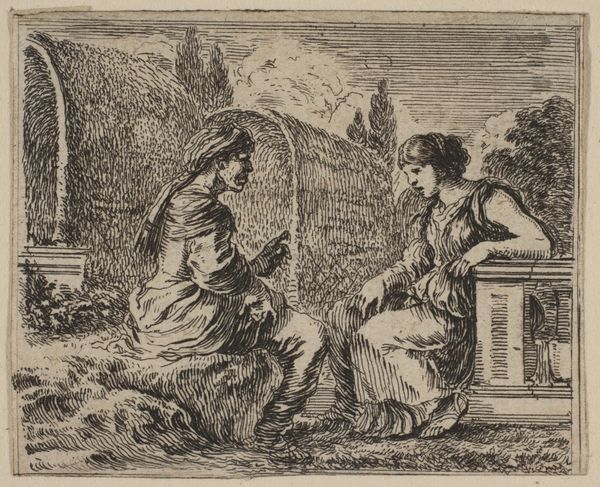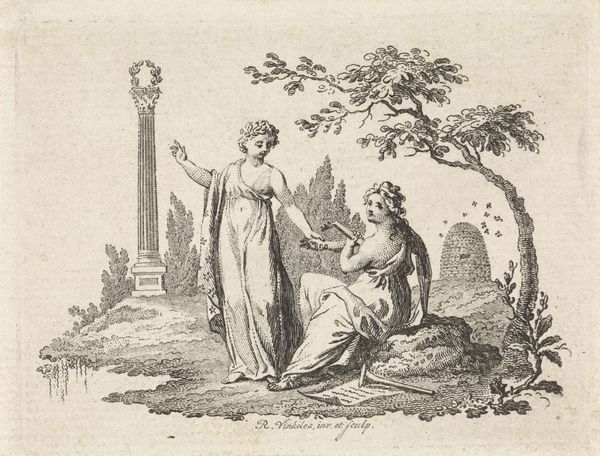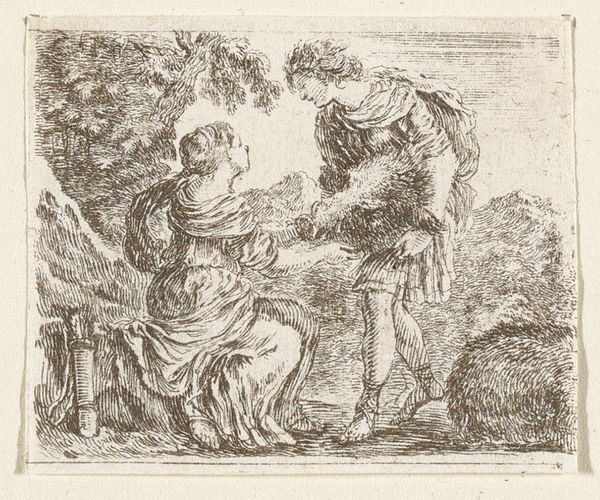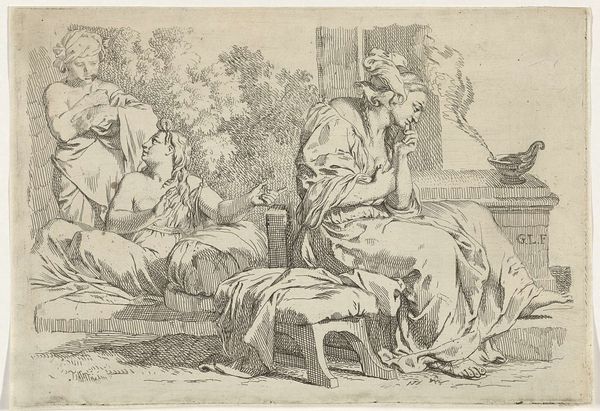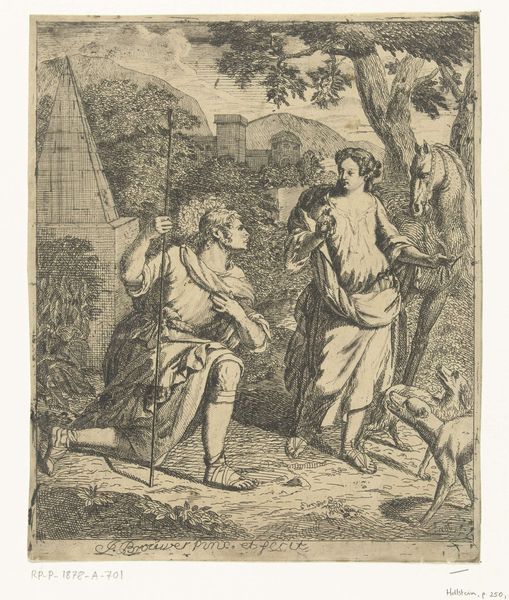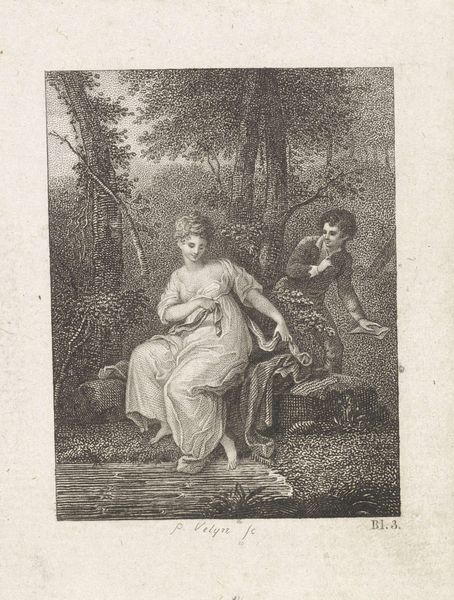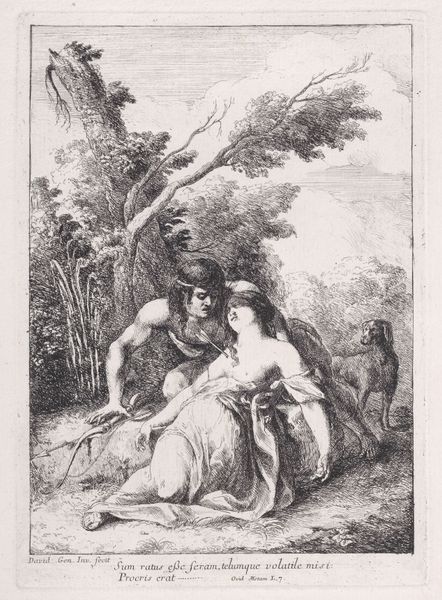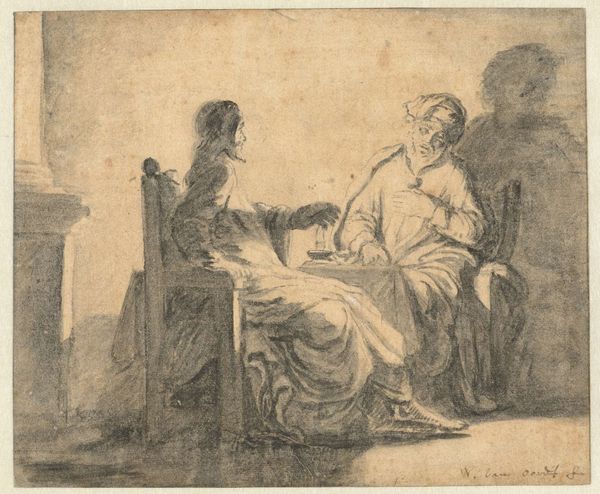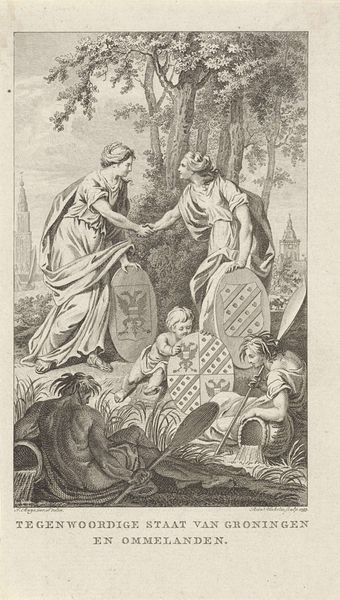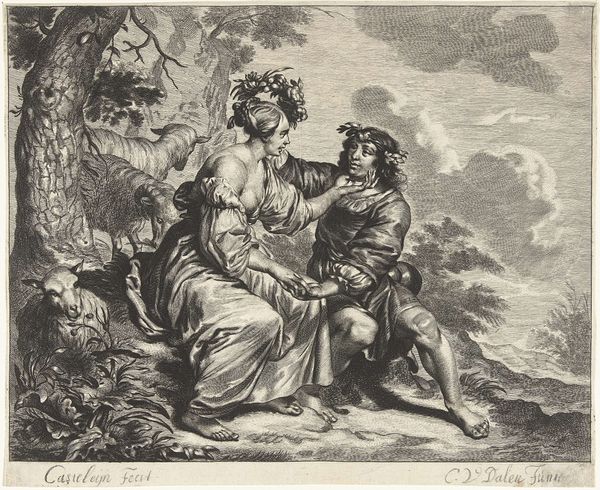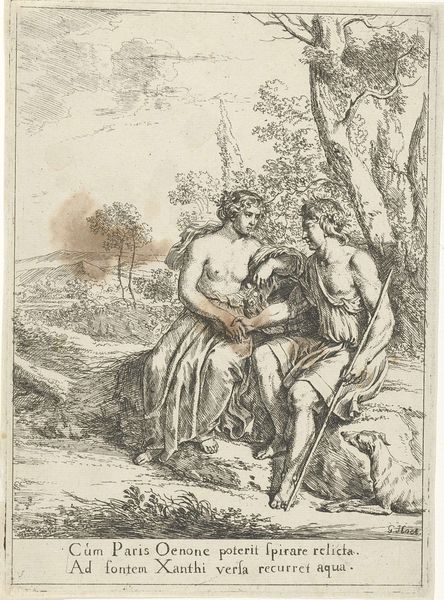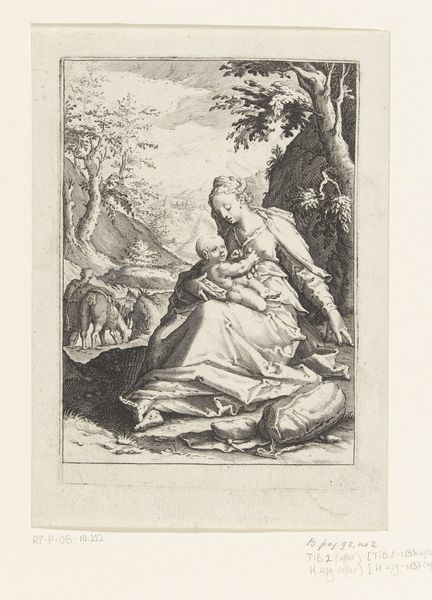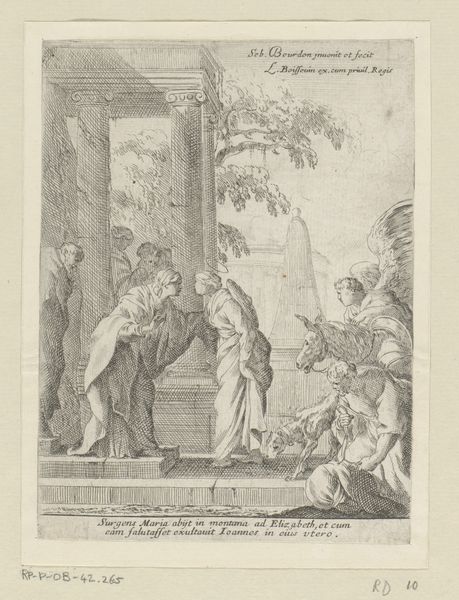
print, etching
#
narrative-art
# print
#
etching
#
figuration
#
italian-renaissance
#
italy
Dimensions: 1 13/16 x 2 3/16 in. (4.6 x 5.48 cm) (sheet)
Copyright: Public Domain
This print, Vertumne et Pormone, was made in the 17th century by Stefano della Bella using the etching process. Think of etching as a kind of controlled drawing with acid. First, the artist coats a metal plate with a waxy, acid-resistant ground. Then, using a sharp needle, they scratch through the ground to expose the metal beneath. When the plate is dipped in acid, the exposed lines are eaten away, creating grooves. The longer the plate sits in the acid, the deeper the lines become, which in turn hold more ink when the plate is printed. The controlled bite of the acid allows for incredibly fine detail, as you can see in the delicate rendering of the figures and the landscape. This print would have been relatively easy to produce, and distribute widely, contributing to the spread of artistic ideas and stories during this period. By focusing on the process, we can appreciate how printmaking democratized art, making it accessible to a broader audience beyond the wealthy elite.
Comments
No comments
Be the first to comment and join the conversation on the ultimate creative platform.
